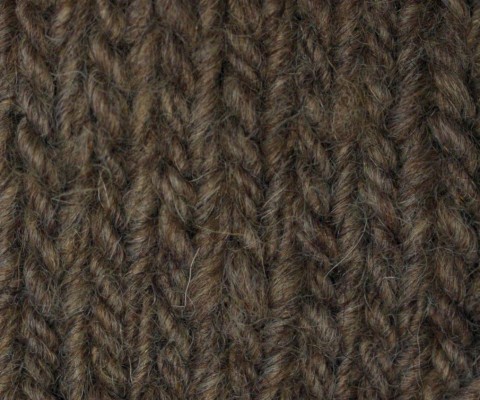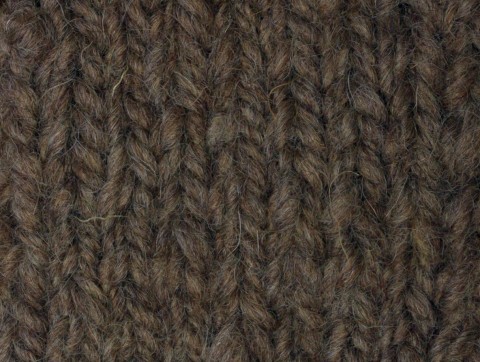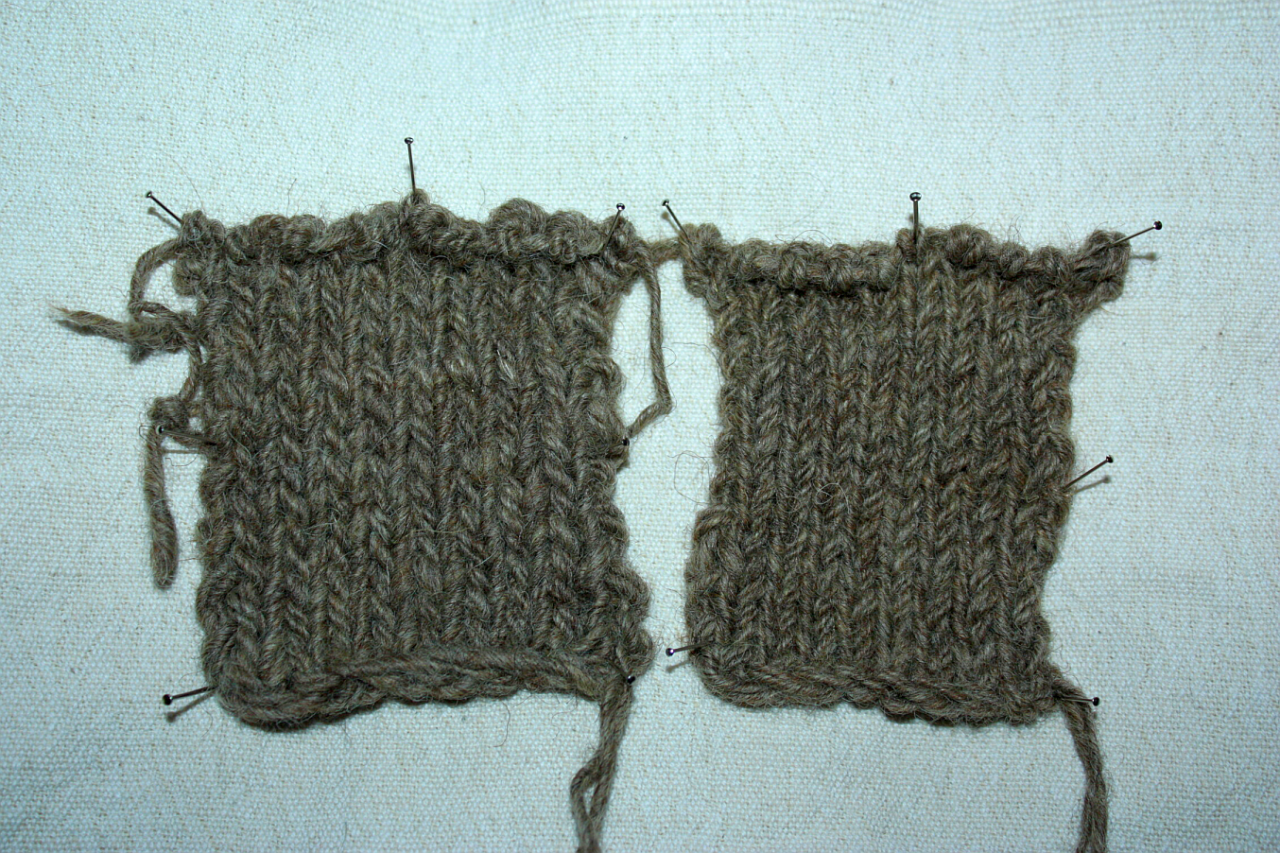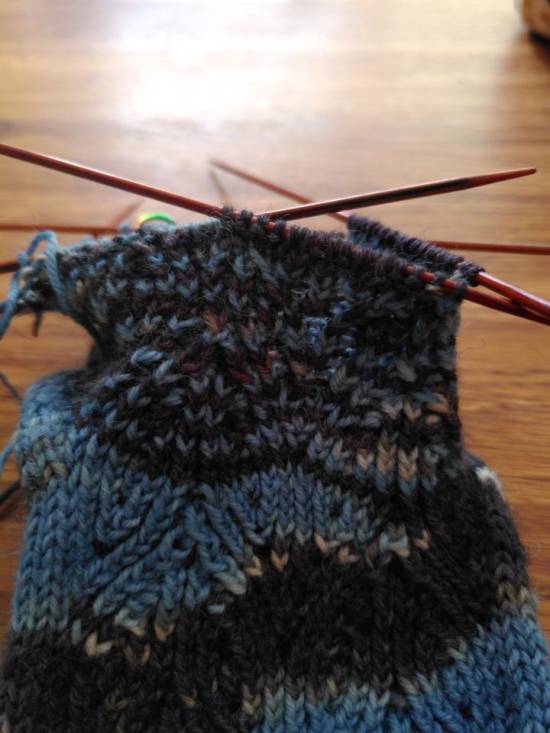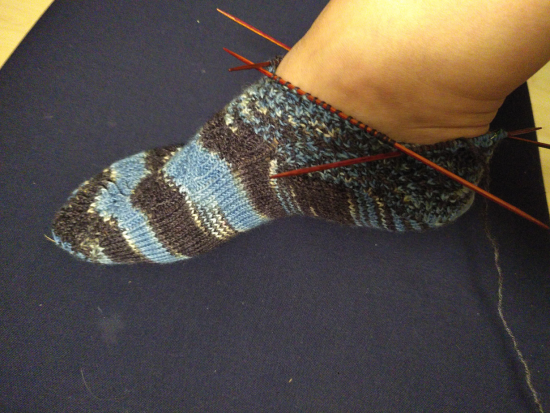In case you're a knitter and enjoy looking at, and thinking about, different stitch structures and what a special move does to the surrounding stitches, you might want to check out Naomi Parkhurst's Stitch Structure series. She's looking at increases and a cast-on technique as well as some other things like elongated stitches - with lovely drawings that make it very clear what is happening. I do enjoy blog posts such as that, and it's always nice to get this slightly different look at knitting!
Search the Blog
Latest Comments
You know that effect when you do something textile-y, and you totally expect a certain outcome, or behaviour of the stuff, and then it just - thwarts you by doing something entirely different?
Aargh. Yes. And yes, that happened... the knitted test pieces that I made did not exactly what they were supposed to do. So at least it proves the old adage that whatever number of questions you go into an experiment with, you will go out with even more!
These are two close-ups of knitting, done with plied threads and done with threads held together. Can you tell which is which? And why?
After washing, they were supposed to look a bit more different... but if there are differences to be seen, well, they are more subtle than what I'd have wished for. So I feel a bit thwarted by my own work, and I'm also wondering why. Was there not enough twist? (There was plenty, I'd have said.) Does it depend on yarn thickness? The last test I did was with thinner yarns, and I had more of an effect there. Or maybe I was knitting too tighly?
Questions, questions, more questions. Well, at least life never gets boring that way!
Happy New Year, dear readers of this blog - I hope you had a good end of the last one and a glorious start into this year! Mine was partly spent with a rather obnoxious cold, so there was a bit more sneezing and a lot more sleeping than I had planned for.
Of couse I'm well again in time to get back to work... timing, right? But it's nice and interesting work that I'm getting back to, so that is definitely on the pro side. (Well, mostly nice and interesting - I just remembered there's tax paperwork to file in the next few weeks, too...)
There's also planning for some conferences and events in the current year. I will be at the Nadelwelt again in May, and then there's the NESAT conference in May as well. The museum in Syke plans a Bronze Age weekend event in August, where I will show things... but the next thing coming up is the Knitting History Forum conference on February 3.
I will talk about spinning, twist, and its influence on knitting at that event, and some bits for that paper are still in the works. So here's a sneak peek for you:
These are knit from the same wool, spun once in z and once in s, with two threads held together (not plied). I've done this before, the not-plied-thing, with rather... interesting results once it got washed. This time, I'm also going to see about the differences in spin direction, including the visual ones. Next up will be the same knitting, but with plied yarns instead of yarns held parallel.
(I was hoping for the two bits to turn out the same size, but alas, the threads of one were a bit thinner than the others, or else I messed up the tension. Ah well.)
If you're interested in the outcome, consider joining the conference! It's online only, so you can attend from wherever you are. More about it, including the programme and the link to get tickets, can be found on the conference website.
I stumbled across a post about knitting cables (1/1 cables, to be exact) in different ways (which was, however, not very substantial), and that brought to mind again the many very detailed and very cool posts on the Techknitter's blog, and on a whim I looked it up again. I had noticed a long while ago that the blog seemed to be on hiatus.
As many blogs who go off for a while do that to never return, that was sort of what I had expected. So I was very pleasantly surprised that the Technknitter is back! (I also discovered the reason for the hiatus.)
So if you're looking for knitting tricks such as how to make jogless stripes, or how to fix curling scarves, or how to handle several colours at once - go check out the blog. It is a fantastic resource, with really neat solutions for a lot of knitting problems, very well explained and nicely illustrated. Even if it's something I'm pretty sure I will not use in my knitting, I still enjoyed reading the posts about it!
A while ago, I started knitting the Semki socks - and recently, I gave up on this project, and frogged them.
I had gotten a good bit up the shaft already, and then tried to try them on, just to realise that my heel won't fit through the very narrow leg part, and that my instep is way too high for the sock. So I ripped back to where the decreases start and adjusted, doing some kind of make-it-up-as-you-go-along changes to the pattern.
That was fun, and it sort of worked, and I ended up with a sock that would fit... but unfortunately, the variegated yarn and the pattern didn't go back to playing well together. I did like the wide stripes in the foot part, and had it turned back to this look after a bit of shenanigans for the transition between foot and leg, I'd have been fine. But this?
Nah. Not really.
So I frogged the sock, and have since started the next try of sock-knitting - this time the "Basketcase Sock". The last time I've done entrelac knitting was ages ago (and a project that I also frogged), but I really like the idea, and it was time to work on my backwards knitting skills too...
I've been thinking about teaching again recently - because of teaching some more again, in different settings, and because of an upcoming conference where I will do and give a short presentation about the topic.
Teaching is fun, and fascinating, and has its own special challenges and rewards. There are some things that are easier to teach and some that are harder. Personally, I find that the hardest technique to teach from the many textile techniques that I have on offer is filet netting. The knot, once you have it in your muscle memory, is not hard to do. It's a nice, fluid set of motions resulting in a nice tight knot that has the correct size every time.
However... there is no good way to split up that set of motions, at least I have not found any way to do that yet. To form the knot, you have to do all the motions and all the passes over and under the different threads, and you have to do all of them correctly. So learning that knot requires you to memorise the whole sequence in one go, which, according to my experience teaching this, is a significant challenge.
I remember learning how to do that knot myself; I used the instructions provided by Therèse de Dillmont in her book, the Encyclopaedia of Needlework, and I read them bit by bit following the sequence for many, many times until the whole process had settled in my brain.
So - teaching long, complex (sort of) sequences that have to be done in one block is definitely a challenge - but it is something that can be taught. Other things just cannot be taught (as in directly giving instructions or passing on sequences of movements) at all. In some cases, the difference between individual bodies means that every body needs an appropriate solution for a given problem; one may work for many or most of them, but not for all. In these cases, you can only assist.
My favourite example for this is tensioning the yarn when knitting Continental style. For most knitters (according to my own anecdotal evidence of looking on hands), wrapping the yarn around the left forefinger works very well. Many knitters wrap twice, some once, some even three times, and the number of wraps may also depend on the yarn. So this is the way how to tension yarn that most people get shown and taught when they start out knitting.
However... for some people, it does not work. That includes me - if I wrap the yarn around my forefinger, it just won't slide at all, and I get higher tension all the time, or if I jerk more of the thread loose, uneven tension. For me, it works wonderfully to just weave the working yarn through the fingers of my left hand: over the ring finger, under the middle finger, and over the forefinger. When I was learning how to knit, finding my personal way for tensioning the working yarn was actually one of the biggest challenges, because nobody showed me that method; I stumbled across it when trying out different possibilities.
So as a teacher, you can be aware of the possibility that a given method or process might not work for everybody because of physical reasons - and then you can, if you know of alternatives and options, tell about the other possibilities that the student could try. But of course you cannot slip into their skin and try out the options yourself to see which one feels best, and you might not be able to demonstrate the other options well as they might not work well, or at all, for you. In the end, they will have to find their own solution by trying out things.
Have you come across similar things - in learning a skill, or in teaching? I'd love to know!
A good while ago, I stumbled across a rather unusual centered decrease in Ravelry, dubbed "bunny-ears decrease". It's a centered decrease that reduces three to two knit stitches. The decrease is not hard to work, is perfectly symmetrical, and not very obvious in the finished piece. So it did become one of the tools in my knitting skillset, and I've put it to good use whenever something unobtrusive was needed as a decrease. Slants as in k2tog or ssk are nice, but only if you want a slanty decrease that is rather more than less visible, especially if you have technical reasons that will stack your decreases, or have them placed in a way that will look weird if they slant.
If that sounds interesting for you, I point you to the site of Naomi Parkhurst, String Geekery. You can find her detailed blog post with photos, drawings, and different instructions on how to work this lovely decrease here.




